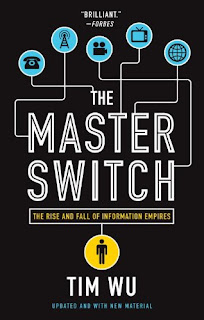Kudos to the Canadian Journal of Academic Libraries for its most recent issue Special Focus on Academic Libraries and the Irrational (Volume 6, 2020) -- it's in my view a top journal in LIS. This article is one of the best I've come across about critical race theory (CRT) in regard to academic libraries. Do you find these points chillingly on par at your bureaucratic institution? Let me know if this resonates with you.
- "when it comes to many common practices in academia such as meetings and structured group work . . . these meetings are “ritual performances in which explicit rules are enacted through tacit knowledge . . . and formal transparency is intertwined with relational and informational withholding” [and] is applicable to academic libraries where meetings manifest as part of what [is] a culture of conformance . . ."
- "Although supposedly meetings are used to ensure that “all voices are heard,” they are often the venues in which conformance is visibly displayed through the tracking of performance targets and regular progress reports."
- "Strategic decisions are already made by administrators, but absurdly (or perversely), middle managers are forced to convene working groups and committees to give the appearance of democratic decision-making, which can be demoralizing for all actors involved in the process. Library administrators and/or managers promise that if library workers will just participate in these meetings, then the library mission will be accomplished, but often the participation in bureaucracy becomes the product itself and the mission is never fulfilled."
- "adoption of bureaucratic practices is supposed to be a way towards equity and efficiency, it is in fact a tool to maintain power structures . . . Sometimes, these groups are formed to hide fait accompli, top-down decisions under the guise of group decisionmaking and stakeholder consultation "
- "bureaucracy within academic libraries functions to provide the appearance of work being accomplished while simultaneously keeping library workers occupied, without enabling the actual accomplishment of work that might upset existing and historically oppressive power structures."
- "In academic libraries, Eurocentric collegial and teaching practices (e.g., using Robert’s rules in meetings, centering quantitative assessment practices) sustain norms of assumed neutrality, objectivity, and meritocracy, while simultaneously delegitimizing the epistemologies and cultural capital of communities of colour"
- “Bureaucracy has invented the concept of the ‘official secret’ which means the information can be gathered and exact commands transmitted in a secretive way . . . a way of gatekeeping, where information is used to dominate marginalized groups. . .”
- "Historically, LIS co-opted technical and managerial language to overemphasize pragmatic administrative concerns while failing to cast a critical eye on how these bureaucratic systems marginalize a good number of library workers . . . BIPOC lack the agency to reject roles or responsibilities that are considered absurd"
- "Libraries maintain an outward appearance of “inherent goodness” and egalitarianism . . . while enacting bureaucratic processes that undermine such aims. "
- "BIPOC must absorb meeting expectations, figure out to whom one should direct questions or delegate tasks, and also adopt white academic jargon"
- "the professional performance of BIPOC vis-à-vis visual representation and intellectual contributions to the group are informed by and judged against white norms . . . performing whiteness requires invested time and wealth; it’s an involved enterprise ranging from hair styling to attire to eliminating accents, and so on, that conceals marginalized librarians’ authentic selves"
- "To survive and thrive in librarianship, BIPOC must remove, or at the very least downplay, all markers of intersectional identities in order to embrace a paradigm of whiteness. These actions are part of what Kaetrena Davis Kendrick (2018) terms deauthentication, where BIPOC preempt microaggressions in order to navigate and be accepted into primarily white workplaces."
- "racial microaggressions are acts of everyday, subtle racism (e.g., questioning phenotype and/or immigration status) that serve to remind BIPOC of their marginalized status in a society where whiteness is the default."
- "microaggressions, CRT argues, repudiates the belief that “racism only manifests in egregious and blatant acts of exclusion . . . [rather it] is instead shrouded in discourses of merit, fairness, and personal responsibility”
- "This toll is exacerbated when BIPOC workers attempt to identify and name absurd practices within the white supremacist culture that they are expected to navigate, and voicing these concerns out loud may not be in their best interests. Indeed, BIPOC may be perceived as unprofessional and ignorant if they state that something is absurd"
- "BIPOC risk being cast aside, picked on, terminated, and even chastised publicly and on a wide scale when directly challenging administration or the dominant culture. They are meant to look down or away."
- "the most ‘rational’ type of domination is found in the bureaucracy simply because it aims to do nothing more than calculate the most precise and efficient means for the resolution of problems by ordering them under universal and abstract regulations.”










